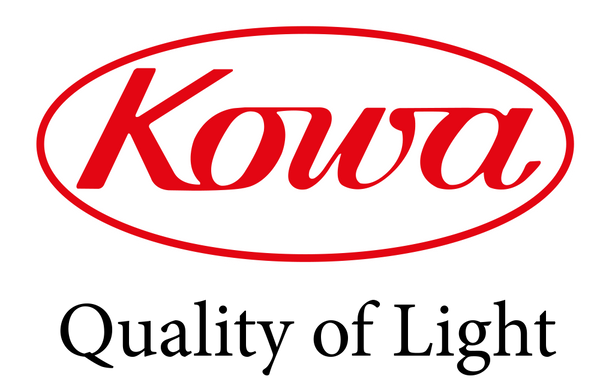In-line Hyperspectral Imaging System Controls Cookie Quality
Perfect Recipe: In-line Hyperspectral Imaging System Enhances Cookie Quality Control

Hyperspectral Imaging for Quality Control
Hyperspectral imaging is revolutionizing vision systems by providing a wealth of high-quality data for artificial intelligence algorithms. While traditional imaging uses three color channels, hyperspectral imaging utilizes hundreds of channels, making it possible to detect subtle variations in products. With an extended spectral range that can include the infrared spectrum, hyperspectral imaging can reveal chemical and physical properties of a product that are invisible to the naked eye. This technology is already being used to sort plastics in recycling facilities and inspect organic food quality.
Until recently, however, hyperspectral imaging was confined to specialized environments such as military applications and research laboratories. Now, IRIS Technology, a Spanish engineering company, has developed a solution to implement hyperspectral imaging for in-line industrial inspection. This includes hardware and machine learning algorithms customized for each specific application.
A prime example of successful hyperspectral imaging implementation is IRIS’s solution for a major industrial bakery. This system continuously and accurately measures the fat content of cookies and pastries in real time, ensuring consistent product quality.
The Challenge: Unexplained Variations in Product Quality
In the food industry, maintaining consistent product quality is critical, as even minor deviations in ingredients can affect taste and texture. For baked goods, controlling fat content is especially important, as fluctuations can result in production cost overruns and inconsistent product quality. The bakery’s team observed variations in product quality that could not be explained by formulation changes alone. However, traditional laboratory methods for fat content measurement were inefficient and time-consuming, requiring specific sampling and preparation, and often taking hours to yield results. This lag made it impossible to rectify production issues in real time, preventing effective process optimization.

The Solution: In-line Hyperspectral Imaging System
What the bakery needed was a system capable of continuous measurement with minimal error, enabling real-time monitoring of fat content to quickly identify and resolve production issues. IRIS Technology responded with an in-line hyperspectral imaging solution that performs 100% inspection of each product, determining fat content instantly. The solution is based on the IRIS VISUM HSI hardware platform, an industrial in-line hyperspectral imaging analyzer that can be integrated into any production line for real-time monitoring of product quality. The VISUM HSI extends traditional vision systems by enabling full chemical analysis unit by unit.
The system utilizes a line scan camera with short-wave infrared (SWIR) sensitivity (900-1,700 nanometers). This makes it ideal for measuring fat content, which is most accurately detected at 1,200 nm and around 1,750 nm. With a capture rate of up to 300 lines per second, the system can inspect products at high speeds without disrupting the production flow. IRIS Technology’s integrated software and chemometric tools allow for self-calibration based on product composition changes, and the system interfaces seamlessly with existing plant information systems.

Crisp Images with Kowa SWIR-optimized Lenses
One of the critical challenges in SWIR imaging is choosing the right optics. Lenses designed for the visible spectrum cannot be used for hyperspectral imaging, as infrared light does not focus in the same manner, resulting in blurry images. “We tested several lens types from various manufacturers,” says Joan Puig, Deputy Director at IRIS. “We ultimately chose Kowa’s LM8HC-SW due to its outstanding performance across the full spectral range required by our VISUM HSI system.”
The Kowa LM8HC-SW, an 8mm industrial lens optimized for the short-wave infrared spectrum, is ideal for detecting fat content at 1,200 and 1,750 nm. It is part of Kowa’s HC-SW series, which includes lenses with focal lengths ranging from 8mm to 50mm, providing flexibility for various applications. Kowa’s industrial-grade design complements the rugged hardware of the VISUM HSI, making it suitable for harsh production environments.
Results: Enhanced Quality and Efficiency
The VISUM HSI inspection system has been operating successfully for more than six months on the bakery’s production line. The system identified a fermentation process issue that was causing fluctuations in fat content. By addressing this issue, the bakery stabilized the fat content and reduced oil consumption by 1.5%. With the right combination of hardware, optical components, and software, the company can now monitor the fat content of its products in real time, ensuring consistent quality and reducing manufacturing costs. Any deviation from set parameters triggers an automatic alert, allowing immediate corrective actions. Impressed by the success of the project, the bakery has decided to implement the system at additional manufacturing sites.
A Versatile Solution for Food Inspection
Hyperspectral imaging can be applied to monitor other parameters in food production, such as moisture, sugar content, and seasonings. Each parameter has an “optimal” value that balances quality with production costs, but achieving this balance is challenging without real-time measurement of a product’s chemical composition. IRIS Technology’s hyperspectral imaging systems, coupled with Kowa’s SWIR-optimized industrial lenses, enable food manufacturers to monitor product conformity with recipes in real time, without slowing down production.
Conclusion: Advancing Food Quality with Hyperspectral Imaging
The in-line hyperspectral imaging system developed by IRIS Technology, equipped with Kowa’s high-performance lenses, has proven to be a game-changer in the food industry. By providing real-time analysis of fat content and other critical parameters, manufacturers can ensure product quality, optimize resource use, and reduce production costs. This successful collaboration highlights the potential of hyperspectral imaging in industrial applications, paving the way for future innovations in quality control and process optimization.
